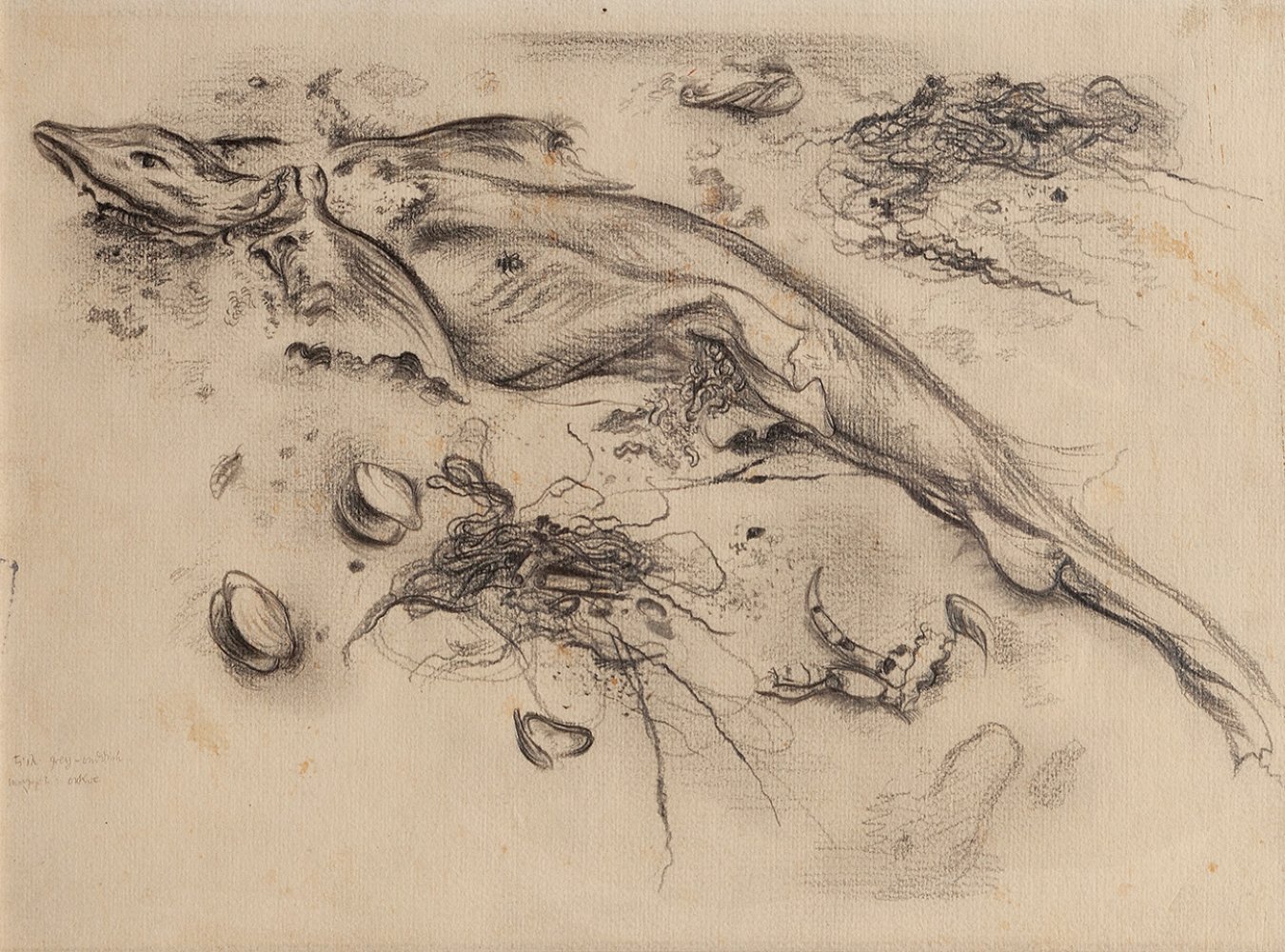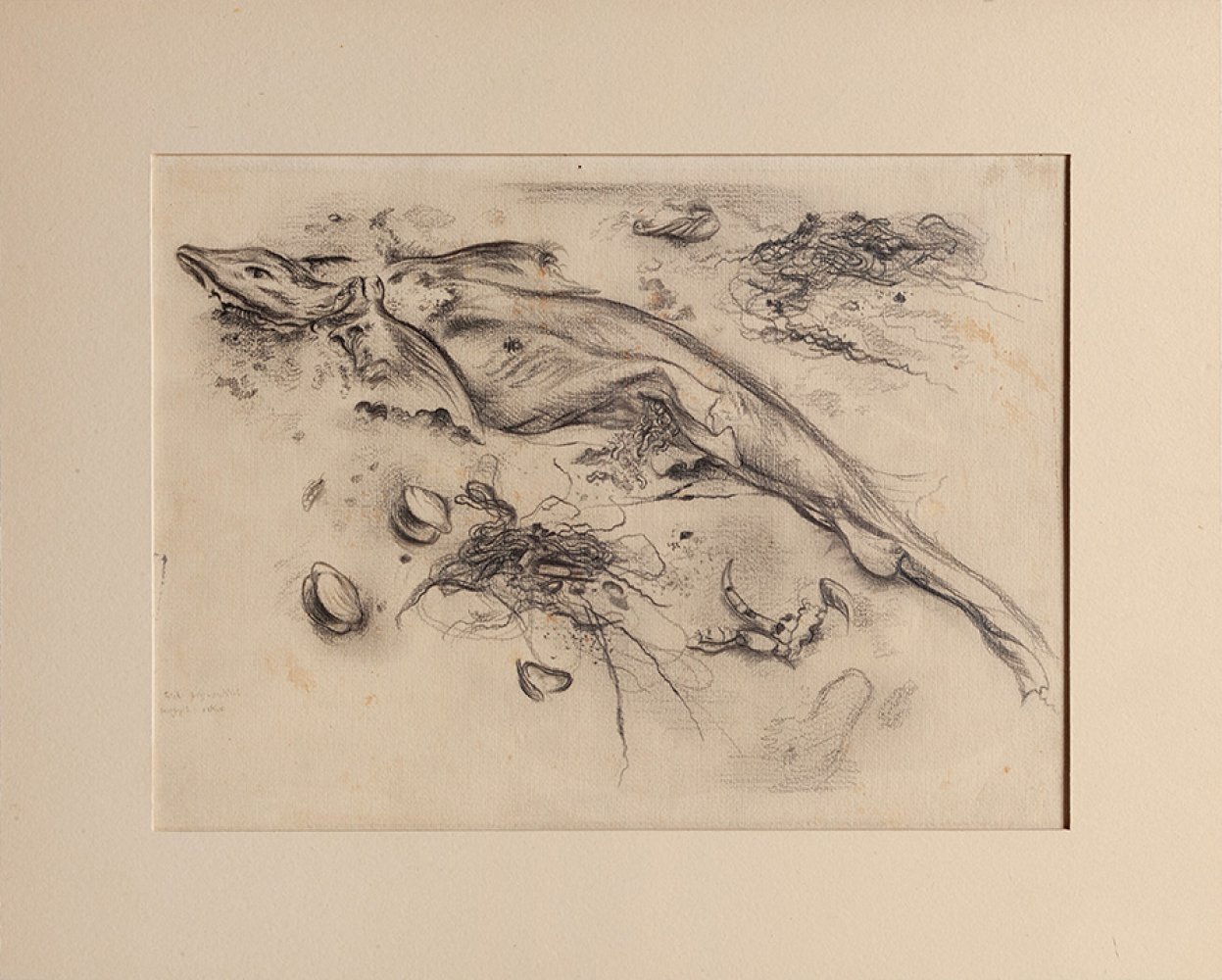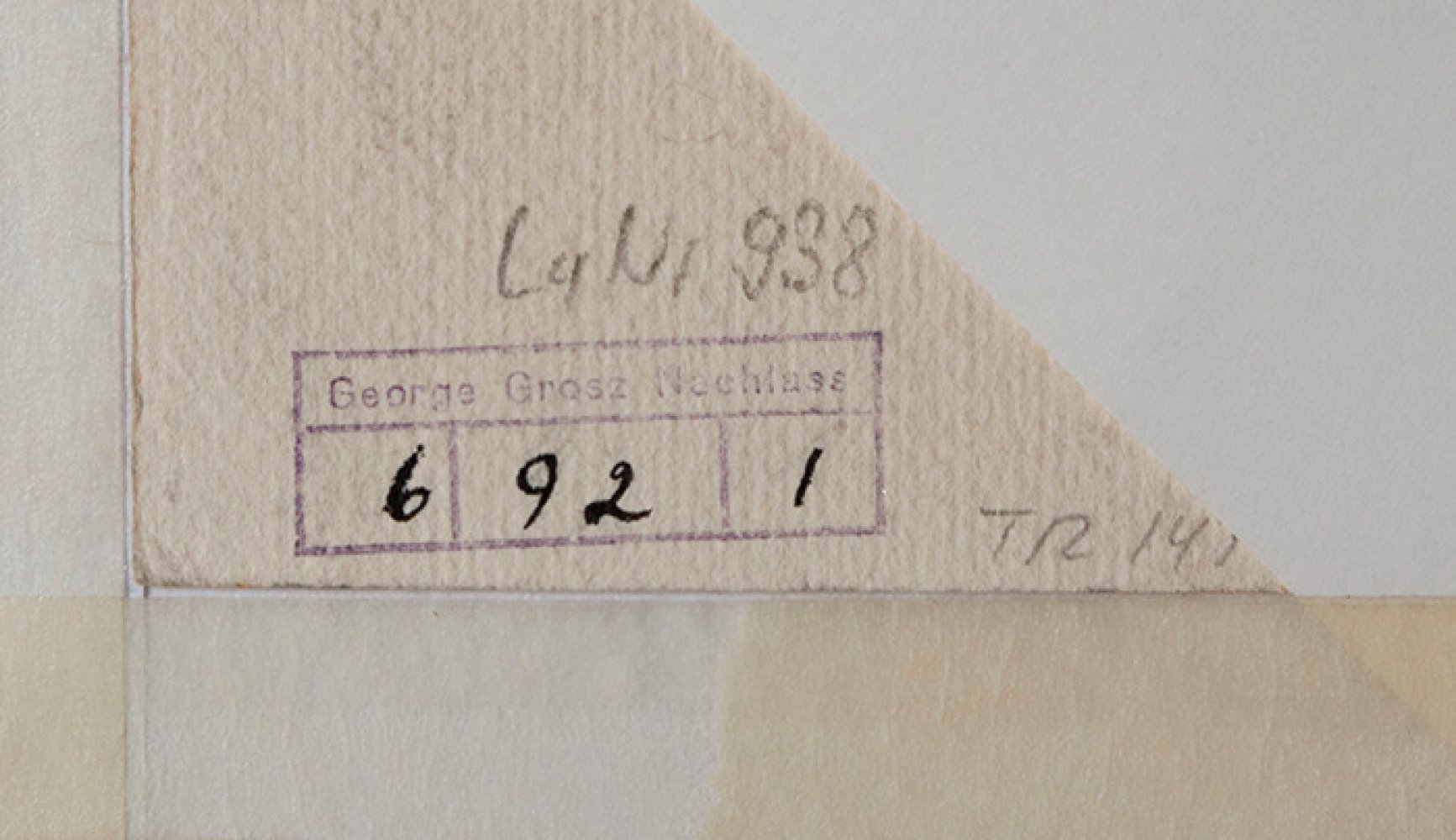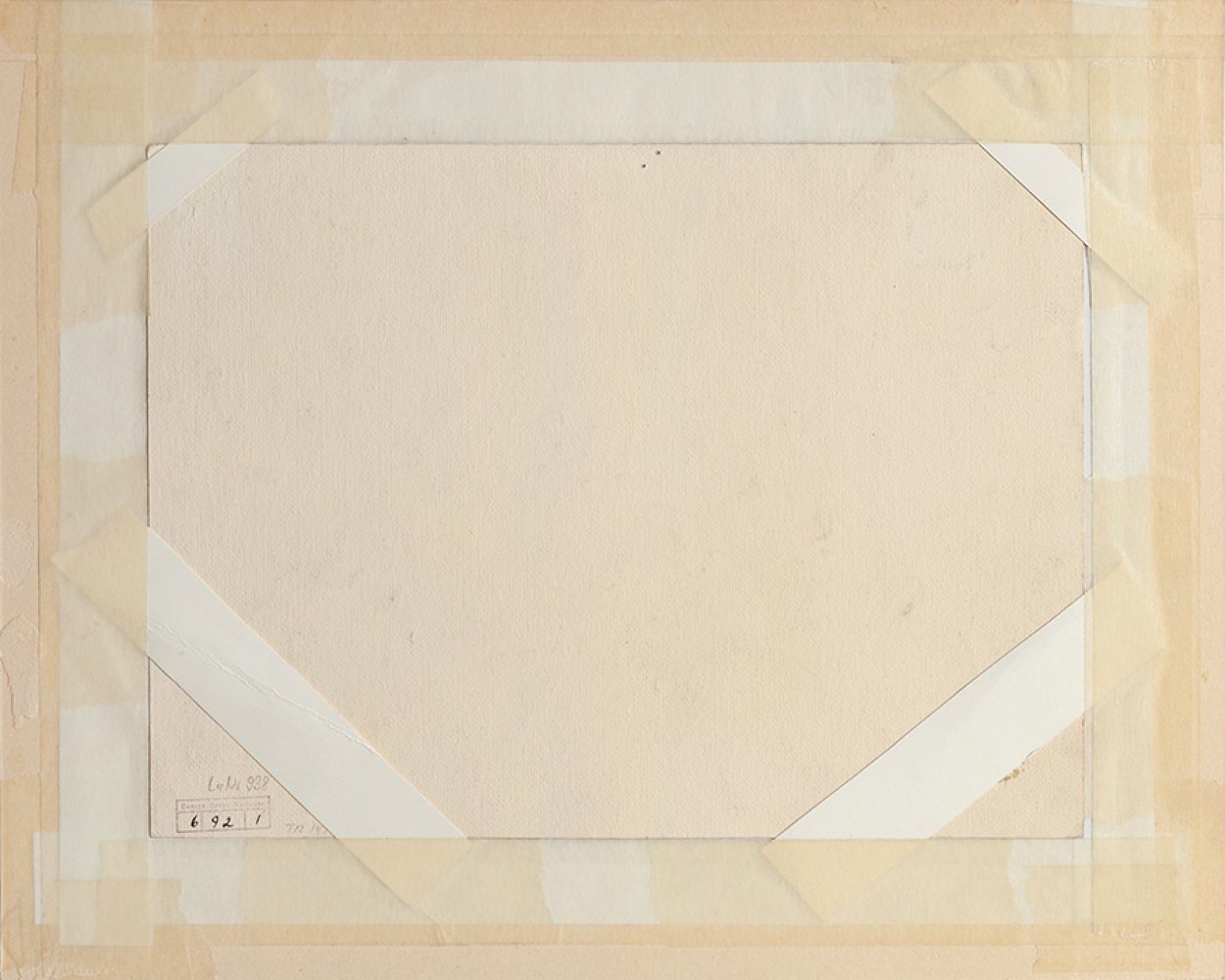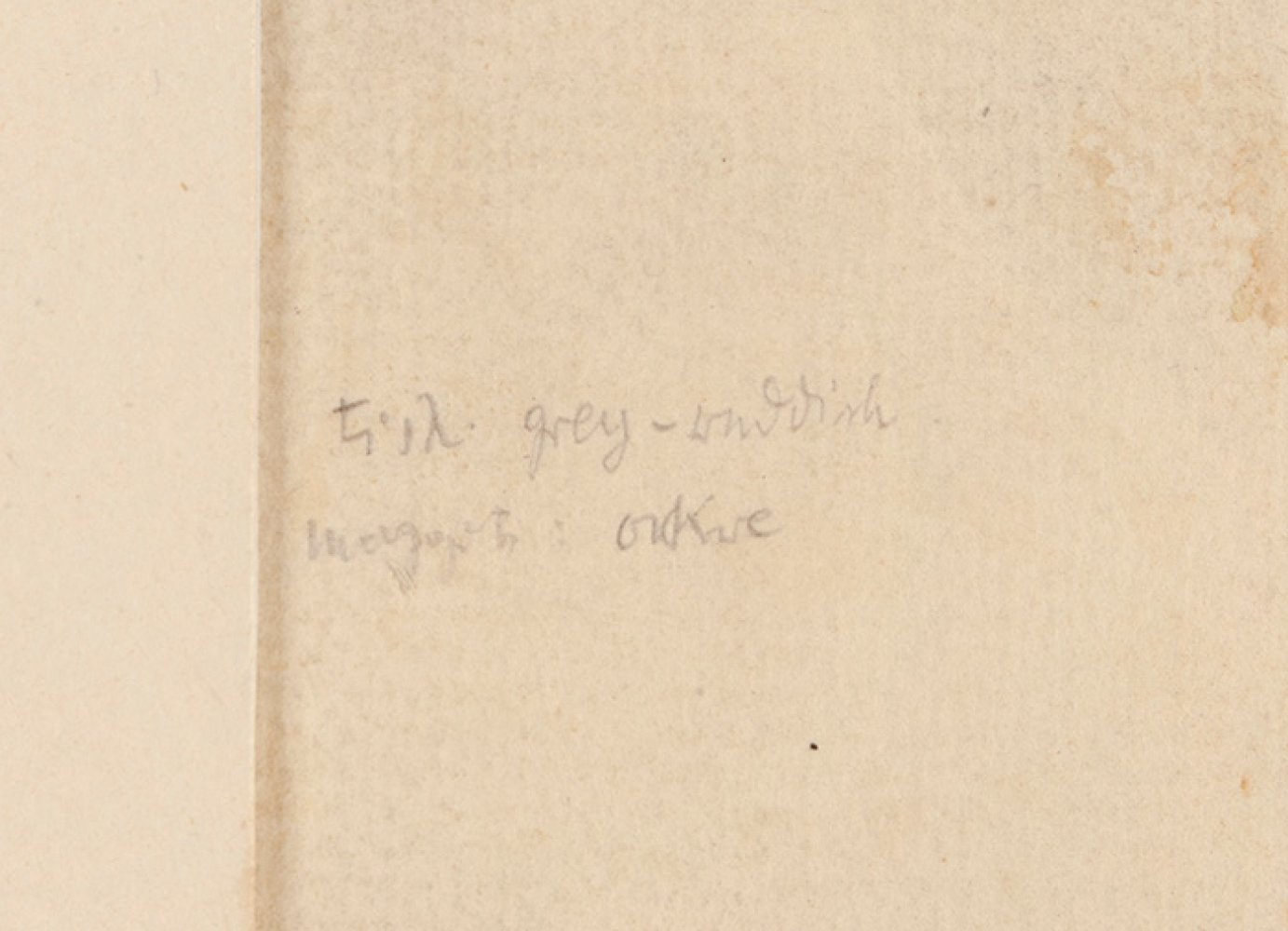41
GEORGE GROSZ (Berlin, 1893 - 1959)."Standgut, 1940.Graphite on paper.With stamp on the reverse.
"Standgut, 1940.
Graphite on paper.
With stamp on the reverse.
With slight rust stains.
Measurements: 23 x 30,5 cm.
An agitator artist who used art as a weapon against the convulsive situation in the Germany of his time, George Grosz knew how to read the omens that spoke of the coming of the Second World War, and he also showed concern for the Spanish Civil War. In fact, his work focuses on the social conflicts and political events of his time, reflected through mass events ("The Funeral", ca. 1917-18) or through everyday personalities, as in his drawings. Grosz was a leading representative of the Berlin Dada movement and later evolved into one of the main masters of the New Objectivity during his time in the Weimar Republic before emigrating to the United States in 1933, escaping at the last moment from the Gestapo. He developed his training within a classicist environment, studying between 1990 and 1912 at the Dresden Academy and, between 1912 and 1917, at the Berlin Academy of Arts and Crafts, where he was a pupil of Emil Orlík. Around this time his intention was to become a hisrothetist, although he also devoted himself to copying works by masters of the Central European tradition, particularly the paintings by Rubens in the Dresden Picture Gallery. In 1913 he travelled to Paris, where he came into contact with the avant-garde movements, particularly Cubism and Futurism. In the French capital he was also able to see at first hand the work of Goya, Toulouse-Lautrec and Honoré Daumier, artists with whom he largely shared his personal sensibility and aesthetic. During these years his language underwent a notable evolution, along the lines of the formal simplification of Cubism and the strength of Expressionism, which was key to the development of German art at the time. In 1914 Grosz enlisted in the army, although he was discharged two years later owing to health problems. Between 1915 and 1917 he concentrated on reflecting the horror of the war and the decline in morale caused by the Prussian defeat through an increasingly simplified language. Around 1920 he immersed himself in Dadaism and his language continued to evolve on a conceptual level, also as a result of his adherence to Communism, impressed by the Russian Revolution. From that time onwards he had a succession of problems with the state as a result of his political activism. During these years he concentrated on drawing, gradually turning his attention to apocalyptic and violent urban visions, with a clear political message, becoming part of the left wing of the New Objectivity. Branded a degenerate artist by the Nazis, Grosz left Germany and settled in New York, where he worked as a teacher.
"Standgut, 1940.
Graphite on paper.
With stamp on the reverse.
With slight rust stains.
Measurements: 23 x 30,5 cm.
An agitator artist who used art as a weapon against the convulsive situation in the Germany of his time, George Grosz knew how to read the omens that spoke of the coming of the Second World War, and he also showed concern for the Spanish Civil War. In fact, his work focuses on the social conflicts and political events of his time, reflected through mass events ("The Funeral", ca. 1917-18) or through everyday personalities, as in his drawings. Grosz was a leading representative of the Berlin Dada movement and later evolved into one of the main masters of the New Objectivity during his time in the Weimar Republic before emigrating to the United States in 1933, escaping at the last moment from the Gestapo. He developed his training within a classicist environment, studying between 1990 and 1912 at the Dresden Academy and, between 1912 and 1917, at the Berlin Academy of Arts and Crafts, where he was a pupil of Emil Orlík. Around this time his intention was to become a hisrothetist, although he also devoted himself to copying works by masters of the Central European tradition, particularly the paintings by Rubens in the Dresden Picture Gallery. In 1913 he travelled to Paris, where he came into contact with the avant-garde movements, particularly Cubism and Futurism. In the French capital he was also able to see at first hand the work of Goya, Toulouse-Lautrec and Honoré Daumier, artists with whom he largely shared his personal sensibility and aesthetic. During these years his language underwent a notable evolution, along the lines of the formal simplification of Cubism and the strength of Expressionism, which was key to the development of German art at the time. In 1914 Grosz enlisted in the army, although he was discharged two years later owing to health problems. Between 1915 and 1917 he concentrated on reflecting the horror of the war and the decline in morale caused by the Prussian defeat through an increasingly simplified language. Around 1920 he immersed himself in Dadaism and his language continued to evolve on a conceptual level, also as a result of his adherence to Communism, impressed by the Russian Revolution. From that time onwards he had a succession of problems with the state as a result of his political activism. During these years he concentrated on drawing, gradually turning his attention to apocalyptic and violent urban visions, with a clear political message, becoming part of the left wing of the New Objectivity. Branded a degenerate artist by the Nazis, Grosz left Germany and settled in New York, where he worked as a teacher.
24th November - 19th & 20th Century Arts & Berlanga´s Privat Collection
Sale Date(s)
Venue Address
General delivery information available from the auctioneer
Setdart offers Worldwide shipping
PICK UP IN ROOM: You can come and pick up your lots in our offices (Barcelona, Madrid or Valencia). At the moment of the withdrawal, you will be able to accept the current conditions of the lot by means of a document that you will sign.
YOU CAN SEND ANOTHER PERSON TO PICK UP: This person must present a signed authorization that you can find in our web page by accessing from BUY AT SETDART- LOGISTICS-DOWNLOAD AUTHORIZATION DOCUMENT. You can also send an e-mail with the requested data in AUTHORIZATION DOCUMENT to admin@setdart.com
Important Information
25% buyer´s premium
OR
21% buyer´s premium at www.setdart.com
Terms & Conditions
The maximum period to pay the lots is 7 working days. You can pay either via bank transfer or with credit card through our platform www.setdart.com (we only accept VISA or Mastercard).
BUYER´S PREMIUM: 22% Hammer price + 21% VAT from the buyer´s premium
If your piece has more than 100 years, our Ministry of Culture requires an export certificate in order for the piece to leave the country. Note that if the piece goes inside the EU, there is no cost for the export certificate. If the piece goes outside the EU, there is a cost for the export certificate. You can find more information in our Ministry of Culture website: https://www.culturaydeporte.gob.es/en/cultura/patrimonio/exportacionimportacion/exportacion/tasas.html
INQUIRIES: admin@setdart.com
Setdart guides you through the entire process, from the time of award to the day you receive your lot. Our logistics team will be happy to manage your transport, and will advise you on the best shipping method with professionals from the sector used to handling works of art and jewelry.
WE OFFER WORLDWIDE DOOR TO DOOR SHIPPING
PICK UP IN ROOM: You can come and pick up your lots in our offices. At the moment of the withdrawal, you will be able to accept the current conditions of the lot by means of a document that you will sign.
YOU CAN SEND ANOTHER PERSON TO PICK UP: This person must present a signed authorization that you can find in our web page by accessing from BUY AT SETDART-LOGISTICS-DOWNLOAD AUTHORIZATION DOCUMENT. You can also send an e-mail with the requested data in AUTHORIZATION DOCUMENT to admin@setdart.com
SETDART IS NOT RESPONSIBLE FOR THE STATE OF THE PARTS ONCE THEY LEAVE OUR FACILITIES. MRW SHIPMENTS: Once the payment is made, your lot will be packed for shipment, the logistics department will send you an e-mail notifying you of the day it leaves our warehouse, changes of address cannot be made after receiving this e-mail.
INSURANCE INCIDENTS: Coverage for the value of the auction up to 3000 ? per shipment, if the value of the auction is higher, Setdart will send you a quote including the additional insurance. The insurance company WILL NOT BE RESPONSIBLE FOR THE SHIPMENT THAT EXCEEDS THAT AMOUNT AND IS NOT FULLY INSURED. MRW INCIDENTS: Maximum notification 48 hours after receipt, after which the insurance company WILL NOT BE RESPONSIBLE AND NO CLAIMS WILL BE ACCEPTED.
E-MAIL LOGISTICS: logistica@setdart.com
PICK UP YOUR MESSAGES: You can send your own messaging, prior notice via e-mail that your shipment is ready, please note 3 or 4 days in advance. This type of shipment is packaged so Setdart will provide you with a quote.
EXPENSES FOR STORAGE: We inform you that if the purchased lot is not picked up within a month, you will be charged 30€ per week per lot. Setdart Online S.L., owner of the web site "setdart.com", "setdart.net" and "setdart.org", acts as a company of Spanish nationality inscribed in the Volume 36955, sheet 182, page B-293056 of the Mercantile Registry, with registered office at Calle Aragó











